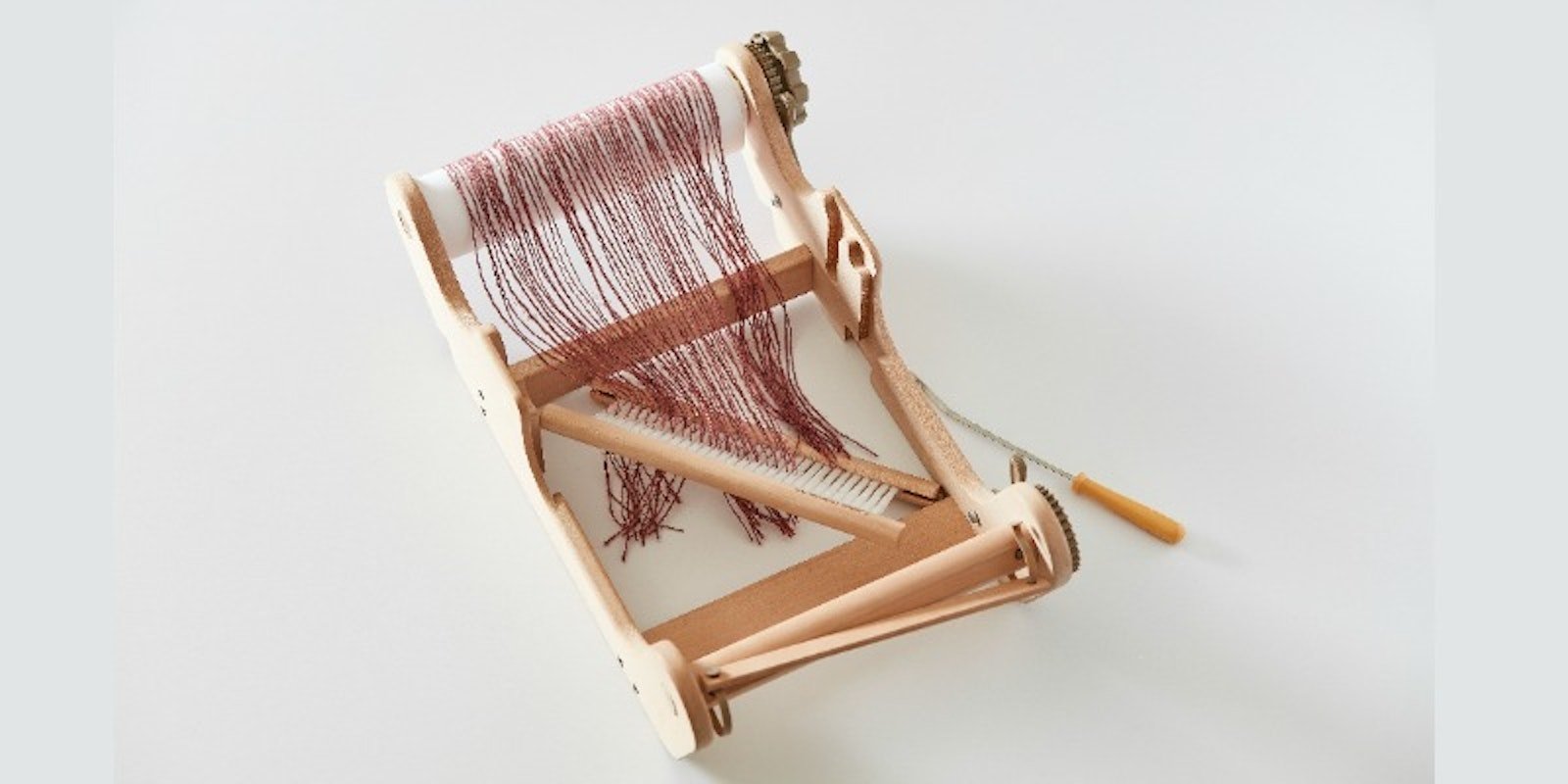Whenever nonweavers ask me why it takes so long to set up a rigid-heddle loom, I explain to them the concept of threading: how every single warp end must be manually pulled through a slot and/or hole (sometimes two if you’re using double heddles), and how sometimes you might have well over 100 of these warp ends.
Threading is sometimes time-consuming, but it’s a vital part of weaving. Most looms come with a basic threading hook that has a hook on one end and an ergonomic handle on the other. Threading hooks have long necks and small hooks designed to fit into tiny heddles on floor looms and holes on rigid-heddle looms. These hooks work fine for many yarns, but, as with all aspects of weaving, sometimes having a specialized tool can make a difference in efficiency and comfort.
The first threading upgrade most rigid-heddle weavers make is to switch to a double-ended hook. Double-ended hooks feature a threading hook on one side and a sleying hook on the other. Sleying hooks are deeper, so you can easily grab multiple threads or larger threads in one go and have more control when threading heddle slots. These are also great for slippery yarns. Just be aware that double threading hooks not made for the rigid-heddle loom might not fit, depending on the sett of the heddle you’re using.
 From top to bottom: Ashford double-ended hook, Schacht threading hook, and Kromski double-ended rigid-heddle hook.
From top to bottom: Ashford double-ended hook, Schacht threading hook, and Kromski double-ended rigid-heddle hook.
If you regularly weave with extra-large or highly textured yarns, you might have noticed standard hooks and even slot hooks are too small. For anyone regularly dealing with these kinds of yarns, I like to recommend a threader with a wire loop. You can find threaders that feature just a wire loop or a wire loop on one end and a more traditional hook on the other. The loops will transport more cumbersome yarns from put-up to heddle with ease. However, with these threaders, you do have to manually place the end through the loop for every end you thread, and you can’t use them for direct warping. That said, the time saved by not having to keep picking up dropped yarns or having to shove thick yarns through slots by hand makes the extra effort worth it.
Whether or not any or all of these different threading hooks will work better than the standard hook is really up to the individual weaver and their needs. While the double-ended hook is nice, if your hand feels more comfortable around a wooden handle, feel free to stick with the standard hook or even to use a wire-ended hook for everyday threading. The most important consideration when choosing a new tool is the weaver who will be using it.
Happy Weaving!
Christina

